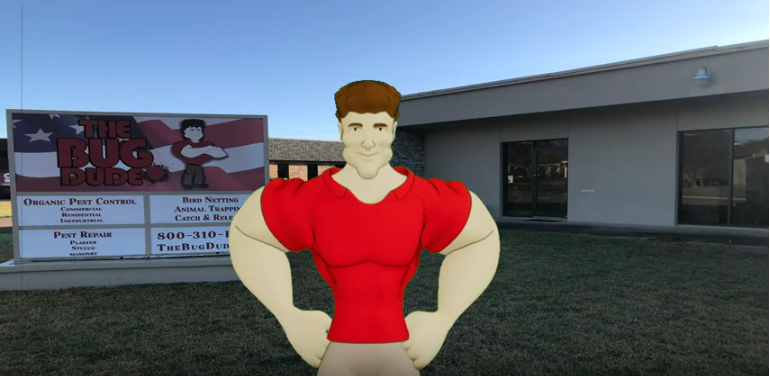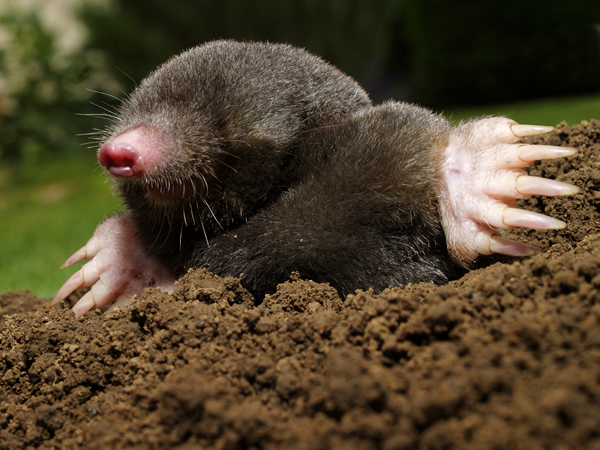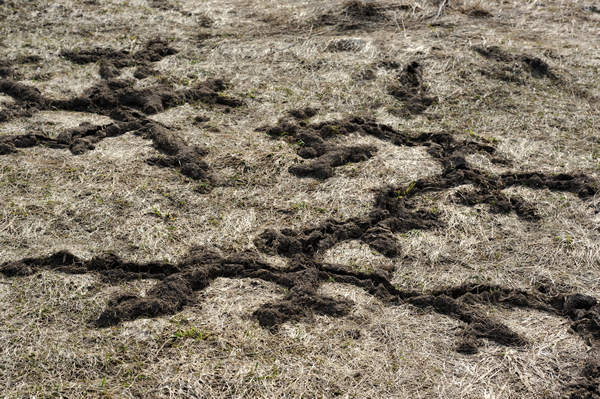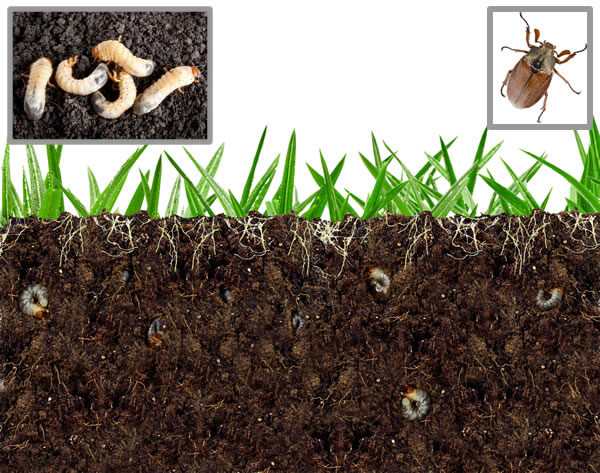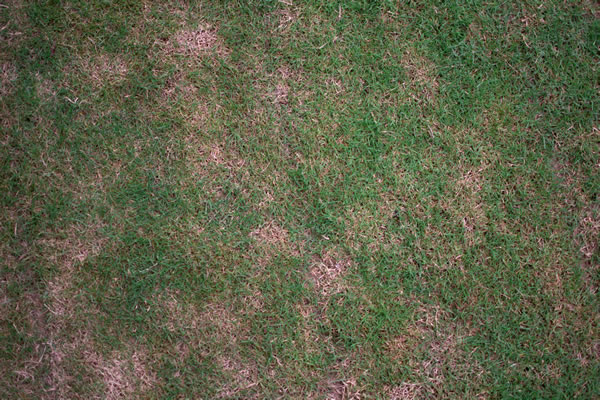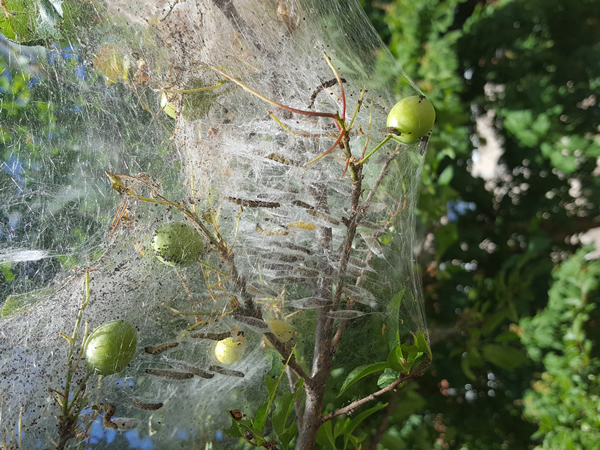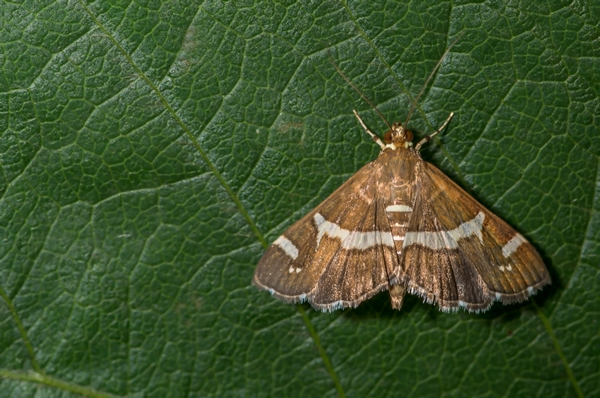May has arrived in Texas, and as rain gives way to sun and summer is only a breath away, it’s the perfect time to spend outdoors. Fortunately, this is also a time of year when celebrations of friends and family take the forefront as we honor the mothers in our lives as well as the many brave members of the military who have given their lives for our country. And whether you are gardening, hosting a BBQ, or just taking the time to relax and play with those you love, your yard is sure to hold a prominent place in your May celebrations.
While a day spent in the backyard with family and friends sounds like a treat, it can quickly turn into headache if yard pests have decided to make your yard their destination this spring. Imagine trying to play soccer while dodging mole runs, or sitting around your patio at night relaxing with friends only to be harangued by June bugs; with a host of pests making their homes in soil, grass, bushes, and trees, it wouldn’t take much to ruin a beautiful celebration. But with some preventative measures and an eye kept out for warning signs, you can have your yard ready for the many festivities in store.
Starting from the ground up, we’ll cover some of the main yard pests and tell you what to look for, what to expect for treatment, and how to prevent or minimize their impact on you and your home.
Moles
First up are Moles. Moles are small mammals, generally around 7 inches long with velvety fur, small ears and eyes, a short tail, and large forelimbs and paws. They are excellent diggers, able to excavate tunnels, called runs, at a rate of 20 feet per hour. These tunnels are used for transportation between their burrows and the surface of the lawn where they find the various insects they feed upon, and can range in depth from surface-level to 10 inches underground. Generally, you will only notice mole activity in your yard when they are using it as a feeding ground, as the deeper runs don’t protrude the surface of the lawn.
Though they are active throughout the year, spring is a time of particular activity for moles, as it brings with it an abundance of insects for the the moles to feast upon, and it is also the time when moles go out in search of a mate (this is the one time of year when you will see multiple moles coming together, as generally they are solitary creatures). With increased activity, not only do you have to contend with greater damage to your lawn, you also have to be concerned about the escalated risk of damage to sidewalks and even your home’s foundation. Though a mole can’t directly harm the foundation or sidewalk, their runs can accumulate water, and as temperatures change, if those runs are too close to your home, that water can cause cracks to form.
What to Look for:
- Lines of dirt a few inches wide disturbing the grass in your lawn
- Volcano-shaped mounds of dirt with a noticeable hole in the center
What to Expect for Treatment:
There are two main methods for mole treatments: trapping and baiting. A pest control technician will evaluate situations on a case-by-case basis to determine which is the best method to use, keeping in mind the safety of pets and people who will spending time in the yard. Either way, mole treatments will take several weeks to complete, so the sooner you call, the sooner you can get your lawn back.
Prevention:
When it comes to preventing moles from invading your lawn the first recourse is to remove the moles’ food sources, this means keeping your yard free from grubs, ants, and other lawn insects. To do this, be sure not to over-water your yard; keeping it on the dry, compact side will not only limit insect activity, but it will also make it less inviting for moles. There are other more extreme measures that can be taken, such as the use of gravel and metal barriers and fences, but these are rarely needed, especially in the metroplex.
Grub Worms and June Bugs
Grubs are the larvae of insects, specifically beetles; the most common types to be seen in your yard are white grubs, also known as grub worms, which are the larvae of June bugs. Grub worms are plump, around 1/2” to 1” in length, are generally seen in a “c” shape, and, as the name suggests, are whitish in color. These pests can quickly destroy the root systems of turfgrass, eliminating its ability to uptake enough water and leading it to dry out and eventually die. In this phase of their life cycle, which occurs from mid-summer to late fall, they are the most damaging to lawns; come winter, they enter a dormant stage before transitioning into adult June bugs during spring and emerging from the soil to mate in late spring and summer.
June bugs themselves will cause some damage to plants in your yard, though the damage is not as severe as that of their larval form. Mostly June bugs are notable for being a nuisance. They are large nocturnal insects, clumsy fliers, and like to congregate at light sources at night, which means they are likely to disrupt any outdoor evening plans. And come morning, you will tend to find them dead on porches, clinging to window screens, and by any other nighttime lights.
What to Look for:
- Scattered, irregular brown patches of dying grass that can be rolled up like a carpet
- Evidence of birds or animals digging in your yard
- The larvae themselves, which would reside approximately 2” to 5” below the soil; if there are 10 or more grubs in a 1 square foot section, that is a sign of a significant infestation.
- A large number of June bugs in your yard during the summer months; this is a good indicator of a large grub worm population nearby
What to Expect for Treatment:
The best way to treat for both June bugs and grub worms is to have a pest control professional treat your yard when the bugs are in their early stages of development, before they become adults and start flying around.
Prevention:
In order to prevent an excess of June bugs from invading your yard the best thing to do is limit the grub worm population lurking under your grass. Unfortunately, there is no precise way to prevent grubs from being in your yard, but you can help limit their numbers through good lawn care practices such as maintaining proper irrigation and regular upkeep; it can also be helpful to allow the soil to be somewhat dry as grubs prefer moist areas. Additionally, by treating for grub worms as soon as you notice an issue, there will be fewer adult June bugs in your yard the following summer, which will lead to fewer grubs infesting your lawn the next year.
Webworms
Webworms are the larval stage of the fall webworm moth. They mostly inhabit shade trees and shrubs, making their distinctive white web-like nests over the ends of the branches, and feeding on the leaves. The nests can surround several feet of the infested branch, with a dense population of larvae, as they will feed together until their final molt. Given a large enough population of these larvae, they can easily defoliate a tree, which is not only unsightly, but can cause damage to the tree.
What to Look for:
Keep an eye out for the fall webworm moth near trees in your yard; the moth is generally white, though it may have some dark-colored markings, has a slightly furry appearance, and has a wingspan of just under 1.25 inches. They usually start to appear in June, and will deposit their eggs on the underside of leaves. Once those eggs hatch into larvae, about a week later, they will begin to spin their silken web over the leaves they are feeding upon, gradually extending it over the summer. This means you also need to keep an eye out for the sizable whitish webs they suspend in tree branches and shrubs.
What to Expect for Treatment:
The best way to combat a webworm infestation is to have a pest control professional treat the infected tree or shrub as soon as you notice an issue arising.
Prevention:
There are two main methods to prevent a webworm infestation from taking over your yard. First, be sure to keep your yard free from leaf litter, especially around trees and shrubs, as the webworms will pupate in these areas before becoming adults and creating new webworm populations. Second, in the late fall or early spring, have your pest control technician perform a Dormant Oil treatment to any trees you are concerned will have a webworm problem in the upcoming year. Dormant Oil treatments are very effective at controlling this issue, but they need to be done while the tree is dormant (no leaves or buds) and the temperatures are just right (in the 50-70 degree range).
There are a whole host of pests looking to make your yard their home and feeding ground this summer, and though we have touched on three of the most common, there are easily dozens more to keep an eye out for, so pay close attention to your lawn, trees, bushes, and shrubs, and don’t hesitate to call for a pest control technician if you notice any signs of pests invading, such as: webs, large insect populations, leaves marred with holes, unusual growth-like scales or tubes, etc. This year, as holidays and summer approaches, let your pest control technician help your yard become a hub of activity for family, friends and fun, instead of a breeding ground and all-you-can-eat buffet for pests of all shapes and sizes.

